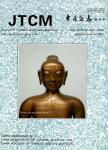Antihepatofibrotic effect of Guizhifuling pill(桂枝茯苓丸) on carbon tetrachloride-induced liver fibrosis in mice
作者机构:School of Food and PharmacyZhejiang Ocean UniversityZhejiang Provincial Engineering Technology Research Center of Marine Biomedical ProductsZhoushan 316022China Department of OncologyZhoushan Hospital of Traditional Chinese MedicineZhoushan 316000China Department of Infectious DiseasesZhoushan Hospital of Traditional Chinese MedicineZhoushan 316000China
出 版 物:《Journal of Traditional Chinese Medicine》 (中医杂志(英文版))
年 卷 期:2022年第42卷第5期
页 面:715-722页
核心收录:
学科分类:1008[医学-中药学(可授医学、理学学位)] 1006[医学-中西医结合] 1002[医学-临床医学] 100602[医学-中西医结合临床] 10[医学]
主 题:liver fibrosis NF-E2-related factor 2 heme oxygenase-1 NF-kappa B Guizhifuling pill
摘 要:OBJECTIVE: To evaluate the protective effects and the underlying mechanism of Guizhifuling pill(桂枝茯苓丸, GZFL) on carbon tetrachloride(CCl4)-induced hepatic fibrosis in mice. METHODS: Male ICR mice by intraperitoneally administered with 20% CCl4(mixed 1∶4 in soybean oil) to induce liver fibrosis. Mice that underwent CCl4 were orally with GZFL. Using hematoxylin and eosin and Masson staining to examine the pathological changes in liver tissue. Serum biochemical parameters, antioxidant enzyme activity and proinflammatory cytokines was assessed. Nuclear factor-kappa B(NF-κB) pathway and nuclear factor-erythroid 2-related factor 2(Nrf2) family members were evaluated by Western blotting. RESULTS: Our findings indicated that GZFL could effectively suppress the progression of liver fibrosis in mice, which was determined based on the improvement in liver function and reduction of collagen deposition. GZFL treatment also decreased the level of cytokines and increased the activity of antioxidant enzymes in liver tissue. Moreover, GZFL exerted anti-inflammatory and antioxidant effects through regulating the Nrf2-mediated antioxidant system and inhibiting the NF-κB pathway. CONCLUSIONS: GZFL may prevent the progression of liver fibrosis by regulating the Nrf2/heme oxygenase-1 and NF-κB signaling pathways, thereby highlighting its role in the management of liver fibrosis.



